ALL ABOARD
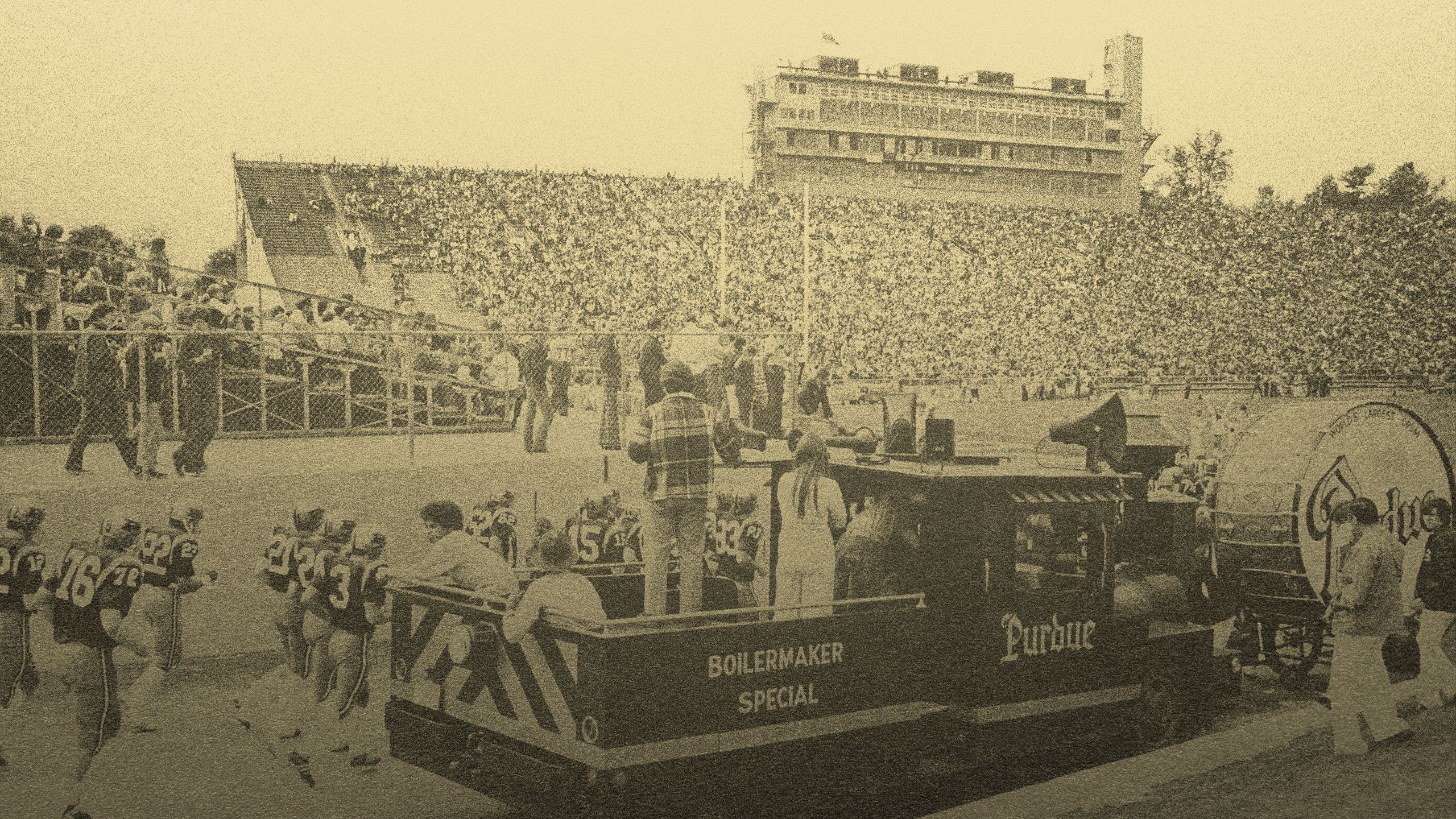
It is a picture-perfect autumn day at Purdue. The leaves are turning and the air is crisp. In the distance, you hear a whistle blow and a horn sound, which is followed by a bell. It can only mean one thing. It is game day.
Traveling through campus, the Boilermaker Special is filled with students cheering for victory while members of the Reamers serve as pilot. The mighty locomotive symbolizes the Boilermaker spirit of strength, perseverance, and brute force. As the official Purdue mascot, the train has traveled thousands of miles and hauled even more passengers.

The Spirit of Purdue
Charged with the care and maintenance of the Boilermaker Special and Xtra Special, the Purdue Reamer Club embodies its nickname, “The Spirit of Purdue.” The Reamer Club of the present day strives to uphold the values set out by its founders in 1923. The club continues to recruit strong pledge classes to build a solid membership. Reamers still gather around the Stone Lions Fountain—restored in 2001 thanks to the club’s efforts—where they enthusiastically perform more than 30 Purdue songs and cheers handed down through the years.
In honor of the Reamer Club’s centennial celebration, we’re revisiting a story from our September/October 2015 issue.
The club recently made a big announcement about the university’s beloved mascot—we can’t wait for this next giant leap!
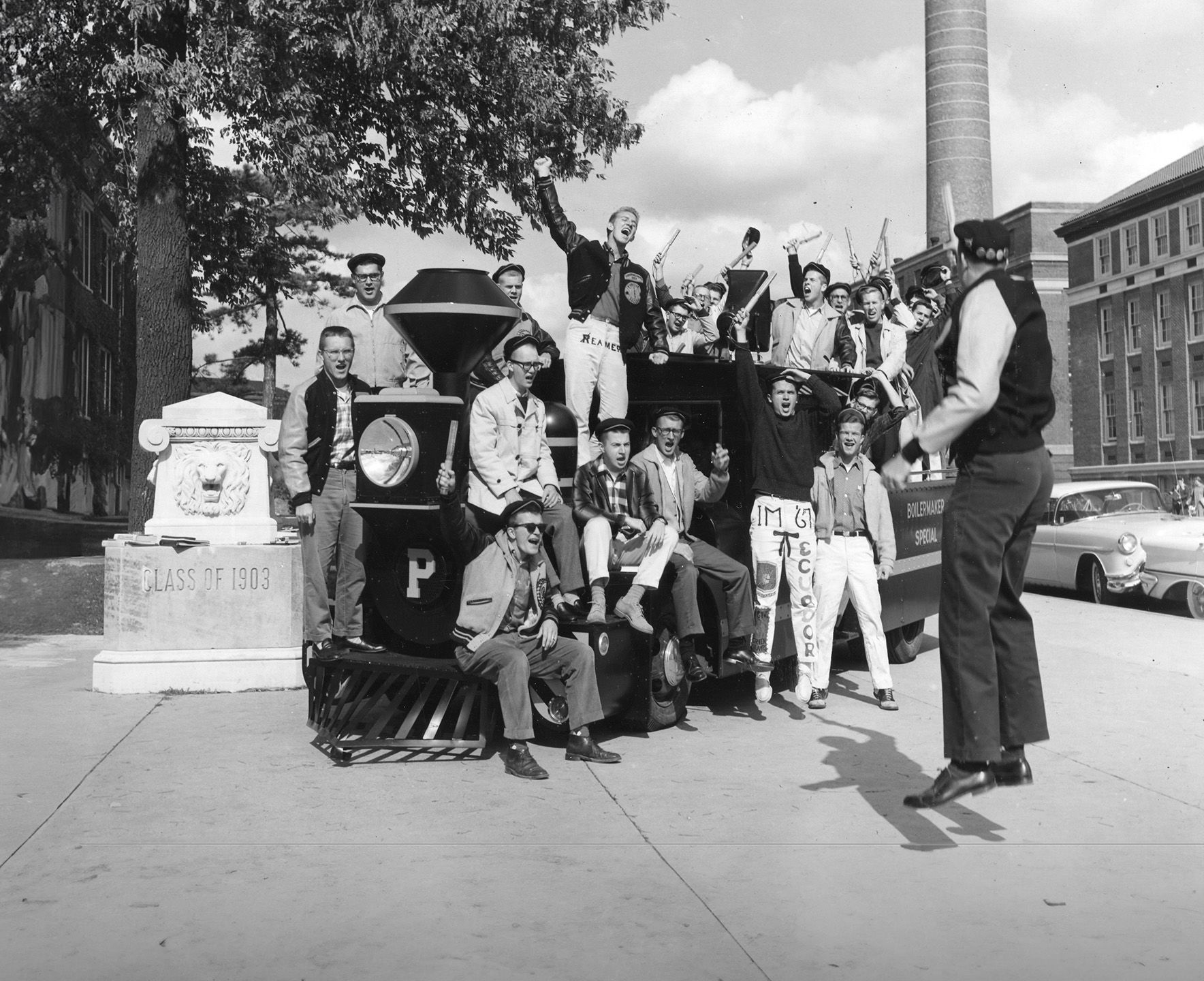
It was on September 11, 1940, that the first Boilermaker Special was presented to the student body at a convocation in the Hall of Music. Although a cooperative effort between two members of the Class of 1907, members of the Classes of 1940 and 1941, and student and alumni contributors, the initial efforts can be traced back to the Reamers after Izzy Selkowitz (P’41) submitted a letter to the Exponent advocating a mascot for the university. They took up the cause and launched a campaign to raise the funds necessary to build the mascot. “Look for the silver headgear” was the slogan on 8,000 tags featuring the print of the steaming locomotive.
By November 6, 1939, $451 had been collected. Since more funds were needed, members of the Reamers journeyed to Chicago for the Purdue vs. Northwestern football game and to meet with members of the Purdue Alumni Club of Chicago. As a result of that meeting, Paul Hoffman, president of the Studebaker Corporation in South Bend, donated a 1940 Studebaker chassis to the university.
Next was an offer from W.H. Winterrowd (ME’1907), president of the Purdue Alumni Association and vice president of Baldwin Locomotive Works in Pennsylvania. He agreed to build the superstructure for the mascot. With designs by J.D. Hoffman (ME’40) and through changes in the chassis by Ross Gear and Tool Company and the Peter Anderson Motor Company of Lafayette, the chassis arrived in Philadelphia on September 3, 1939. There, the Boilermaker Special was completed.
After its dedication, the Special was used around campus and nearby areas for pep rallies and athletic events. And this tradition is still true today. Now on its fifth version, it appears at all games in Ross-Ade Stadium, travels to away football games, and is a favorite at events ranging from parades to birthday parties. The Boilermaker Special made trips to California to accompany the Boilermakers to the 2001 Rose Bowl and the 2017 Foster Farms Bowl, although it was shipped to the games given the distance of more than 2,000 miles—the rare times it has not been driven to an event.
And it is still the Reamer Club that is responsible for the care of the Special. The club was founded in 1923 and continues to embody the spirit of Purdue. Known for their Reamer pots, the club members take the job of care, maintenance, and piloting of the Special very seriously. The tradition of the Boilermaker Special continues as the club celebrates 100 years of representing the old gold and black.
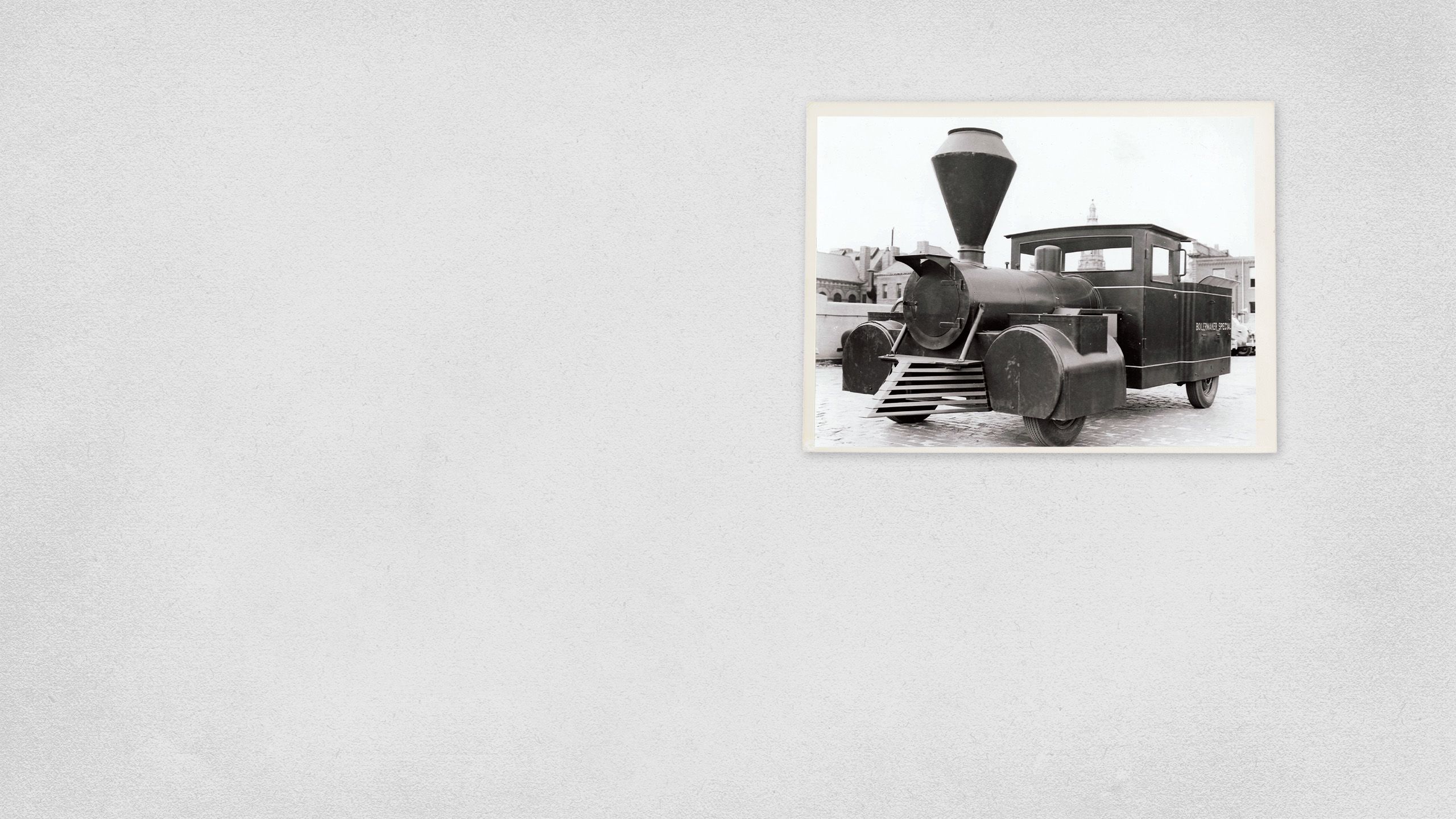
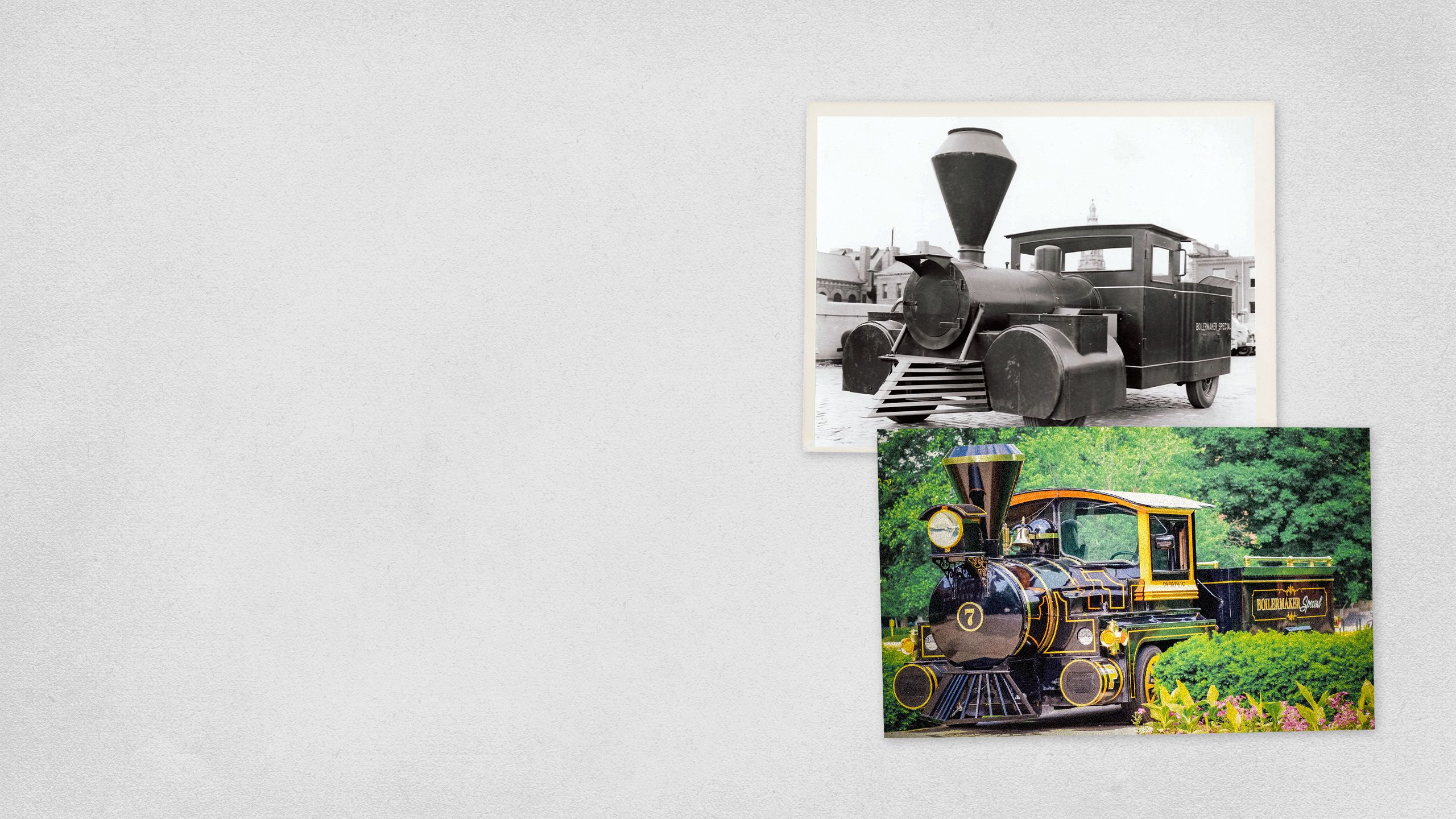
It was on September 11, 1940, that the first Boilermaker Special was presented to the student body at a convocation in the Hall of Music. Although a cooperative effort between two members of the Class of 1907, members of the Classes of 1940 and 1941, and student and alumni contributors, the initial efforts can be traced back to the Reamers after Izzy Selkowitz (P’41) submitted a letter to the Exponent advocating a mascot for the university. They took up the cause and launched a campaign to raise the funds necessary to build the mascot. “Look for the silver headgear” was the slogan on 8,000 tags featuring the print of the steaming locomotive.
By November 6, 1939, $451 had been collected. Since more funds were needed, members of the Reamers journeyed to Chicago for the Purdue vs. Northwestern football game and to meet with members of the Purdue Alumni Club of Chicago. As a result of that meeting, Paul Hoffman, president of the Studebaker Corporation in South Bend, donated a 1940 Studebaker chassis to the university.
Next was an offer from W.H. Winterrowd (ME’1907), president of the Purdue Alumni Association and vice president of Baldwin Locomotive Works in Pennsylvania. He agreed to build the superstructure for the mascot. With designs by J.D. Hoffman (ME’40) and through changes in the chassis by Ross Gear and Tool Company and the Peter Anderson Motor Company of Lafayette, the chassis arrived in Philadelphia on September 3, 1939. There, the Boilermaker Special was completed.
After its dedication, the Special was used around campus and nearby areas for pep rallies and athletic events. And this tradition is still true today. Now on its fifth version, it appears at all games in Ross-Ade Stadium, travels to away football games, and is a favorite at events ranging from parades to birthday parties. The Boilermaker Special made trips to California to accompany the Boilermakers to the 2001 Rose Bowl and the 2017 Foster Farms Bowl, although it was shipped to the games given the distance of more than 2,000 miles—the rare times it has not been driven to an event.
And it is still the Reamer Club that is responsible for the care of the Special. The club was founded in 1923 and continues to embody the spirit of Purdue. Known for their Reamer pots, the club members take the job of care, maintenance, and piloting of the Special very seriously. The tradition of the Boilermaker Special continues as the club celebrates 100 years of representing the old gold and black.


Boilermaker Special I
The body of the first Boilermaker Special was fabricated and assembled at Baldwin Locomotive Works in Eddystone, Pennsylvania, and mounted on a Studebaker Champion chassis. Louis S. Divan (ME’29), who spent his entire career at Baldwin, took this photo of the completed train prior to it being shipped to Purdue in the fall of 1940.
Boilermaker Special II
Introduced in 1953, the second Boilermaker Special was almost identical to the original. It used a new International Harvester truck chassis beneath the original superstructure, which was extensively reworked by employees of the Monon Railroad Shops in Lafayette. The stronger engine and sturdier frame allowed the mascot to travel to out-of-town events. In 1956, a trailer was added to increase passenger capacity; however, this put additional strain on the mascot, and by 1958, a committee had formed to plan for its replacement.
Boilermaker Special III
Donated to Purdue by General Motors in 1960, Boilermaker Special III served the university for 33 years—the longest period for any model.
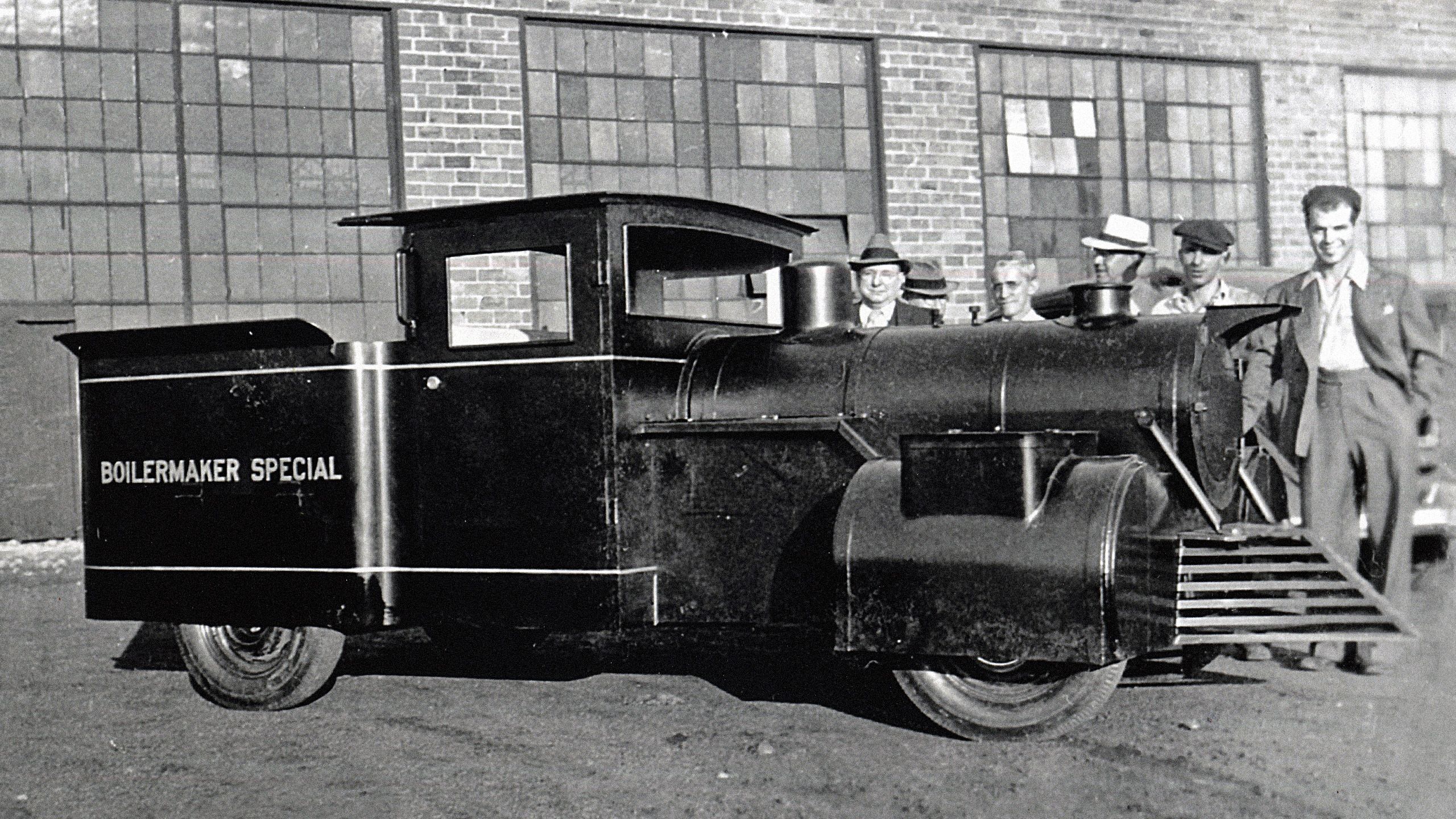
Boilermaker Special I
The body of the first Boilermaker Special was fabricated and assembled at Baldwin Locomotive Works in Eddystone, Pennsylvania, and mounted on a Studebaker Champion chassis. Louis S. Divan (ME’29), who spent his entire career at Baldwin, took this photo of the completed train prior to it being shipped to Purdue in the fall of 1940.
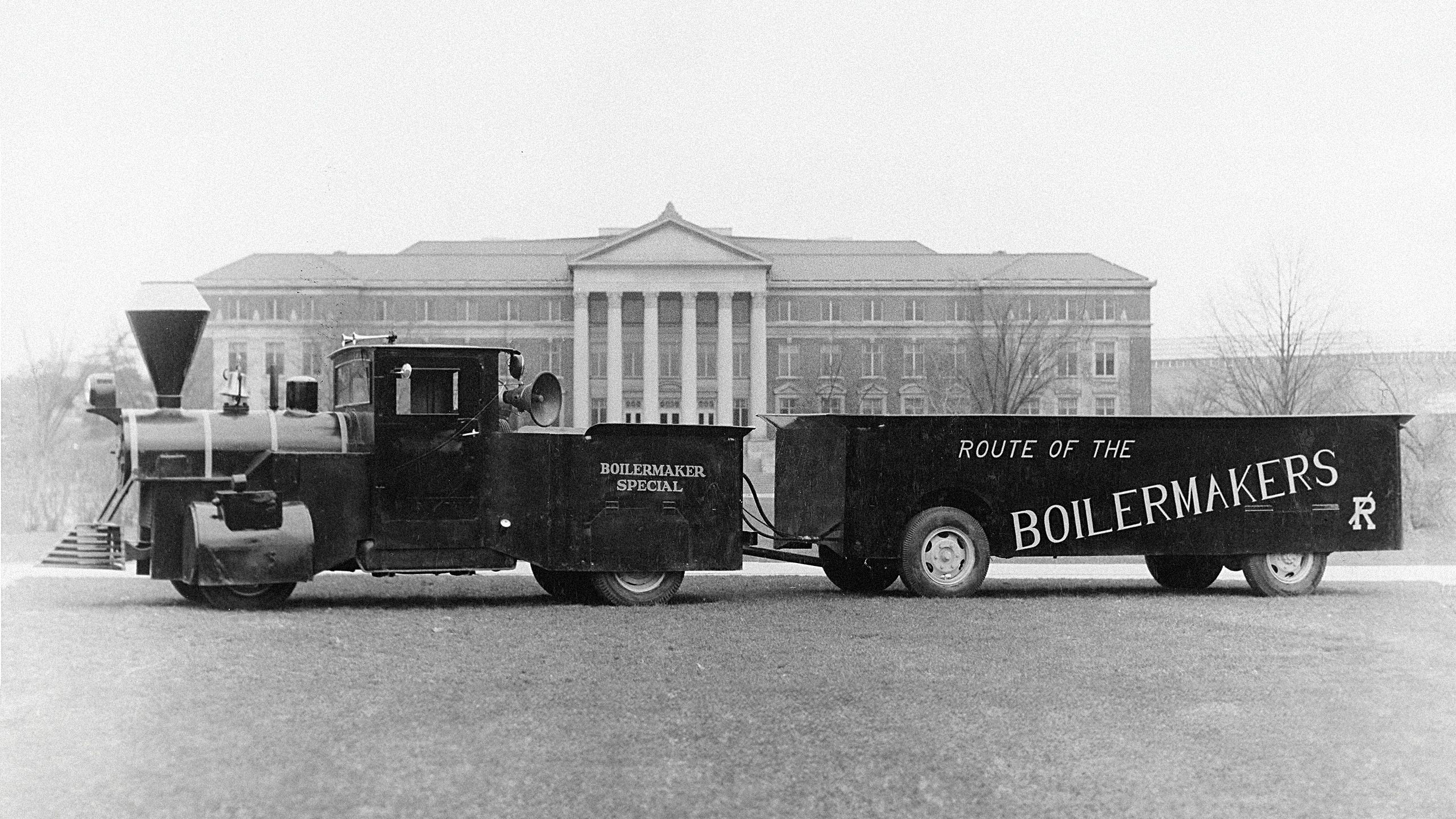
Boilermaker Special II
Introduced in 1953, the second Boilermaker Special was almost identical to the original. It used a new International Harvester truck chassis beneath the original superstructure, which was extensively reworked by employees of the Monon Railroad Shops in Lafayette. The stronger engine and sturdier frame allowed the mascot to travel to out-of-town events. In 1956, a trailer was added to increase passenger capacity; however, this put additional strain on the mascot, and by 1958, a committee had formed to plan for its replacement.
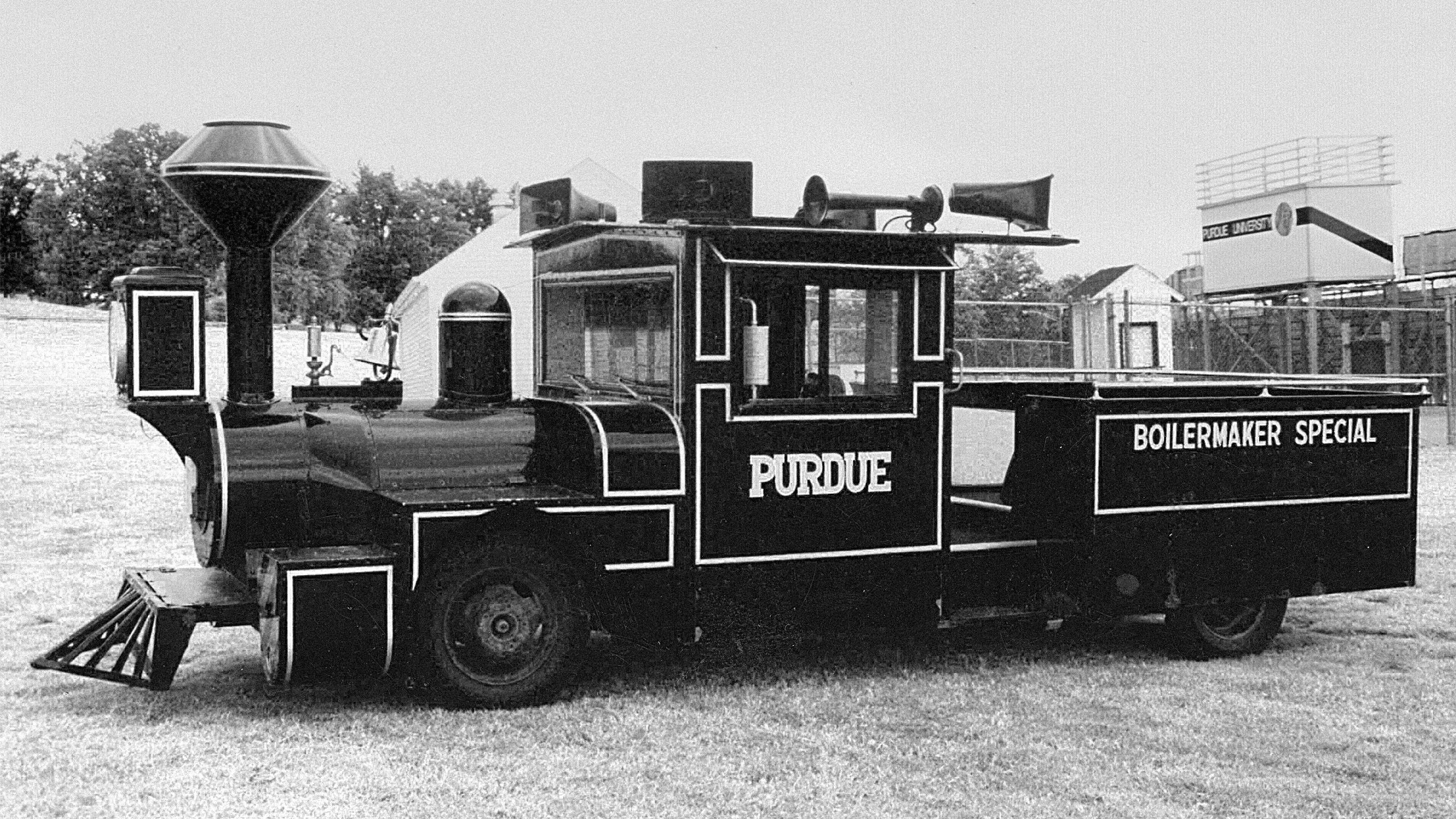
Boilermaker Special III
Donated to Purdue by General Motors in 1960, Boilermaker Special III served the university for 33 years—the longest period for any model.
Xtra Special IV
An article in Purdue Alumnus in April 1978 announced plans for the creation of a “Mini-BMS-IV” to be used when size limitations prohibited the Special from participating in certain activities. Reamer member Robert L. Geiger (A’78) appealed to alumni for financial support for the project. Raymond S. Jevitt (M’50), president of Perkinson Manufacturing in Chicago, offered to donate the materials and labor necessary to make the Xtra Special a reality.
Powered by an electric motor so that it could be used indoors, the Xtra Special IV was presented to the university on October 25, 1979, at the President’s Council luncheon in the Purdue Memorial Union. It quickly became a mainstay at Ross-Ade Stadium, where it could traverse the turf that was inaccessible to the larger mascot.

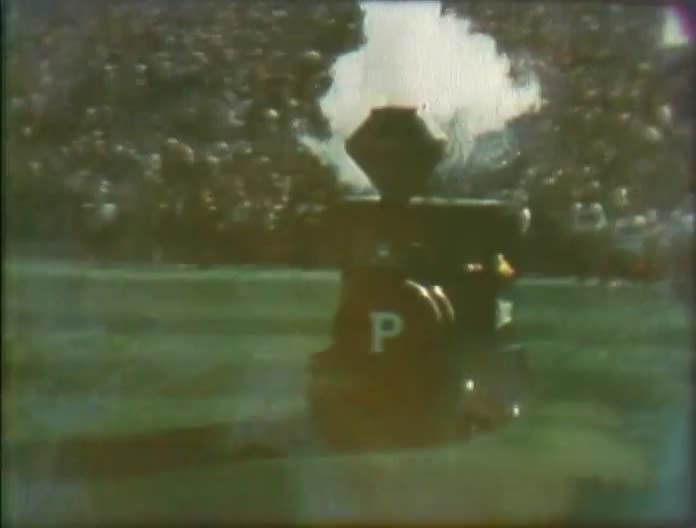
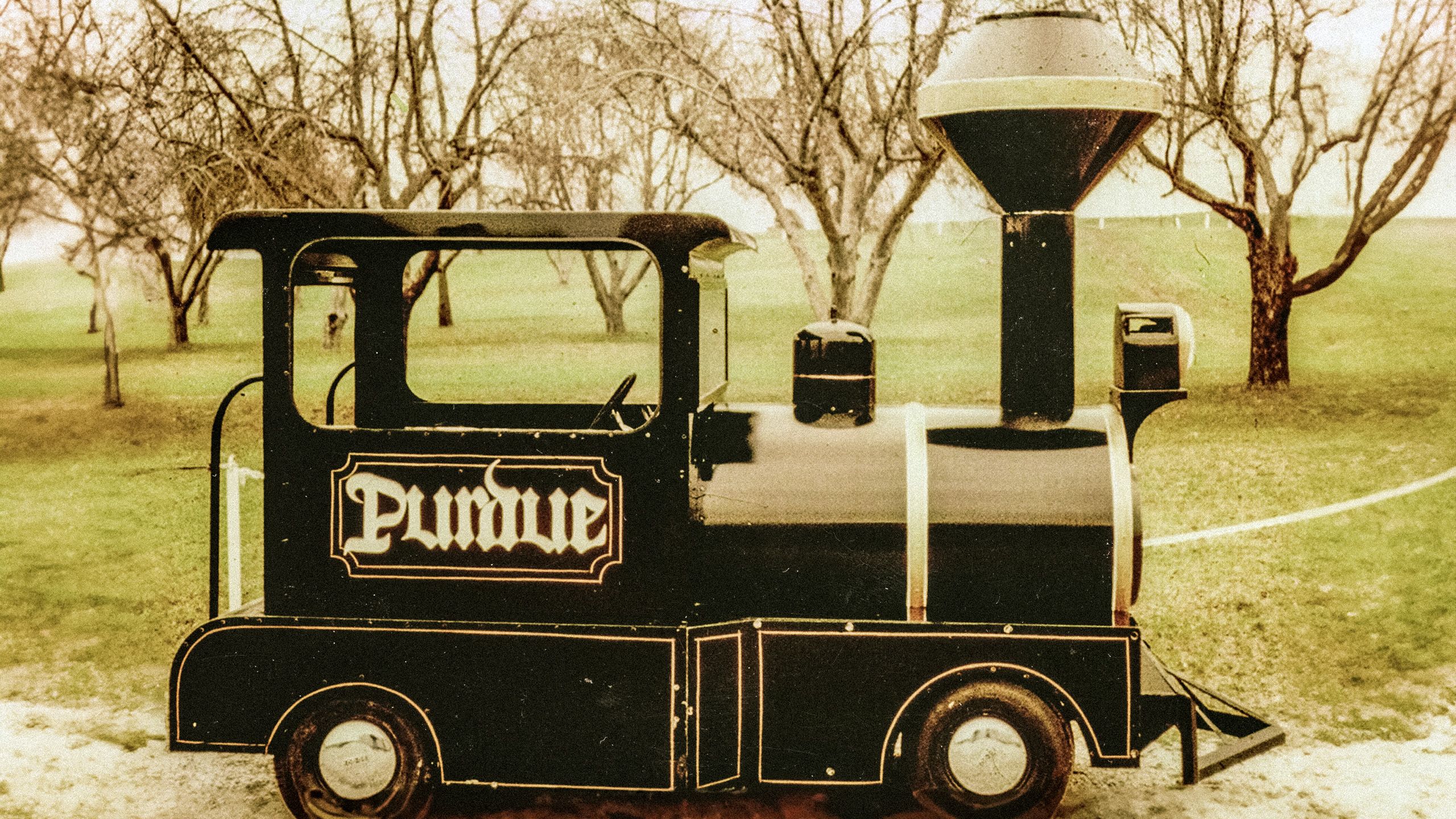
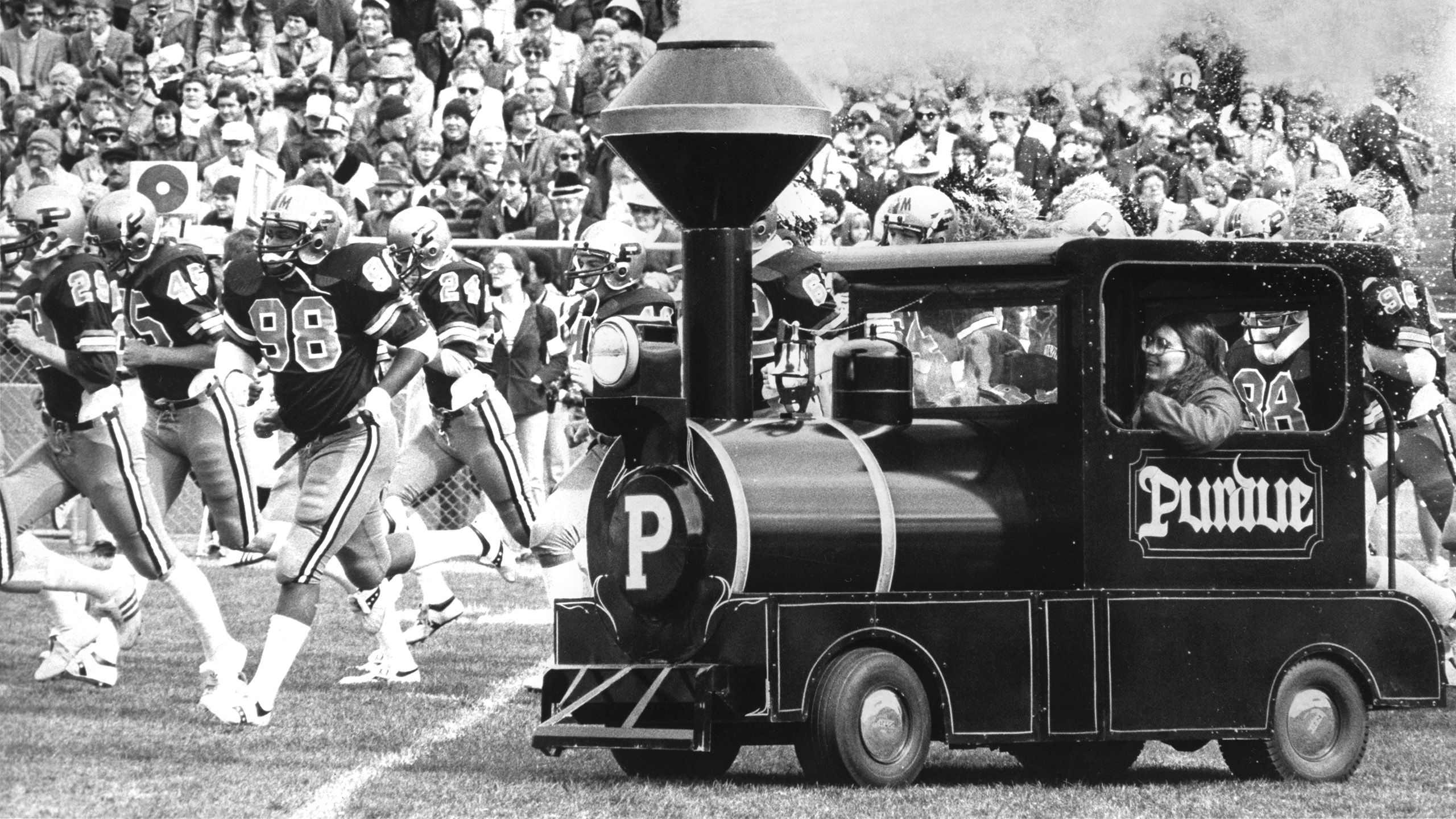
CLICK FOR SOUND
CLICK FOR SOUND


Boilermaker Special V
President Steven Beering (HDR S’00) presented the Reamer Club with the key to the Boilermaker Special V during a dedication ceremony on September 25, 1993. Technical graphics students digitized a design for the 10,800-pound mascot. Wabash National Corporation of Lafayette volunteered resources to build the new superstructure, and donations of aluminum from ALCOA, an automatic transmission from the Allison Division of General Motors, and a chassis by Navistar International were also key to its construction. The most prominent feature on the updated mascot was a five-chime freight train horn that came from a Norfolk Southern locomotive.
Xtra Special VI
In 1996, the Xtra Special IV was disassembled to make way for the Xtra Special VI. Joseph Penaloza (ME’89, LA’94) designed the updated VI, which was dedicated on October 19, 1996, during Homecoming. It stood seven feet high and 12 feet long, two feet longer than its predecessor.
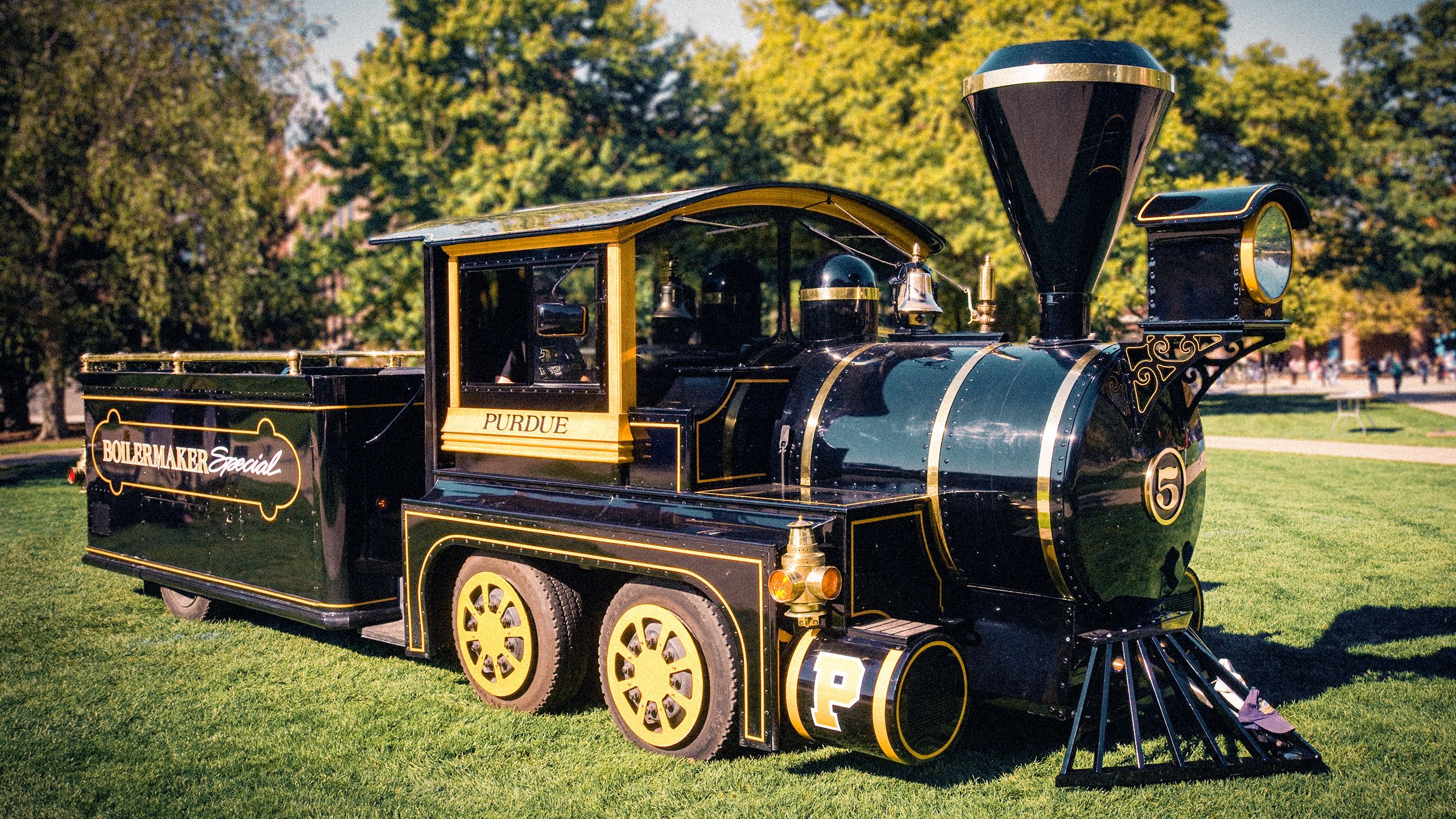
Boilermaker Special V
President Steven Beering (HDR S’00) presented the Reamer Club with the key to the Boilermaker Special V during a dedication ceremony on September 25, 1993. Technical graphics students digitized a design for the 10,800-pound mascot. Wabash National Corporation of Lafayette volunteered resources to build the new superstructure, and donations of aluminum from ALCOA, an automatic transmission from the Allison Division of General Motors, and a chassis by Navistar International were also key to its construction. The most prominent feature on the updated mascot was a five-chime freight train horn that came from a Norfolk Southern locomotive.
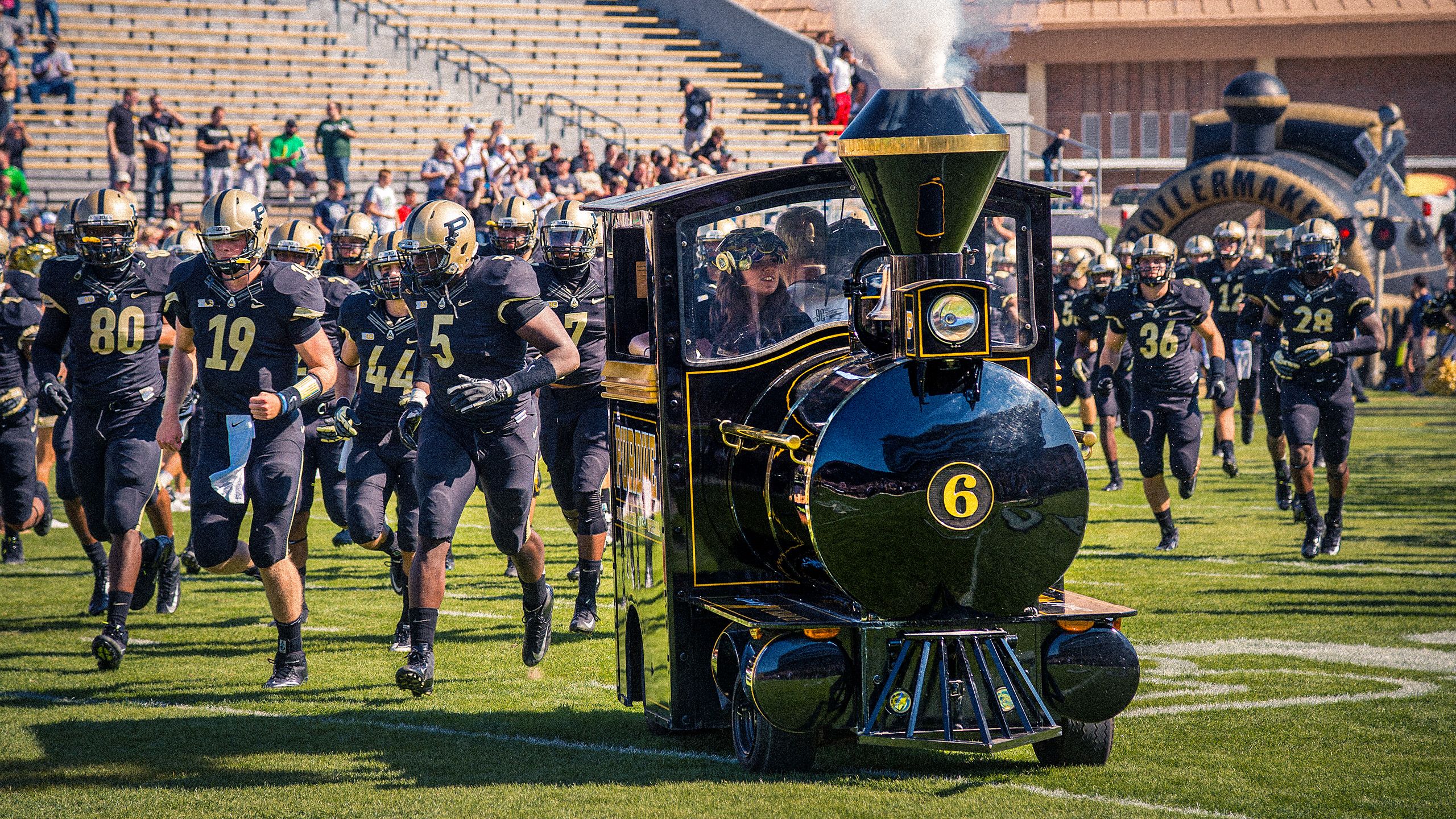
Xtra Special VI
In 1996, the Xtra Special IV was disassembled to make way for the Xtra Special VI. Joseph Penaloza (ME’89, LA’94) designed the updated VI, which was dedicated on October 19, 1996, during Homecoming. It stood seven feet high and 12 feet long, two feet longer than its predecessor.
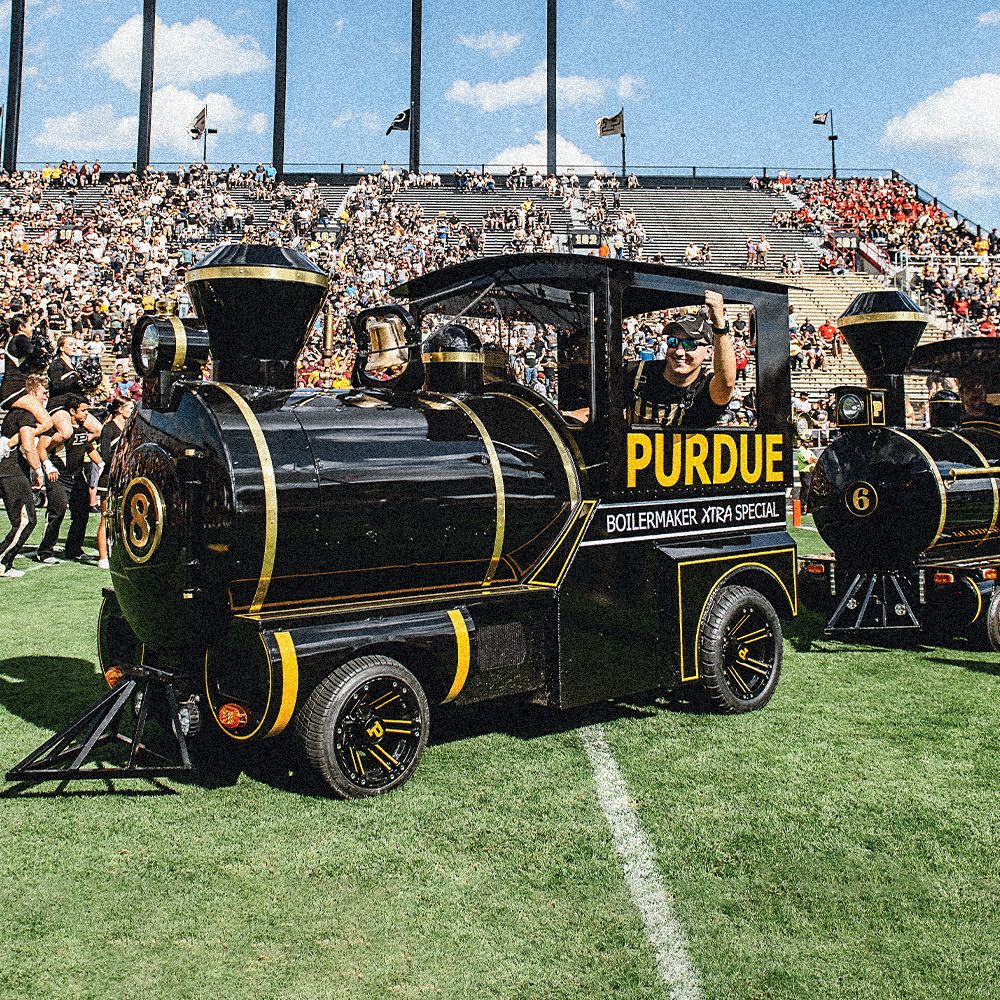
It All Adds Up // The Boilermaker Special and Xtra Special alternate numbers with each iteration, so even though the current Boilermaker Special is referred to as VII, there have only been five versions since the mascot’s introduction.
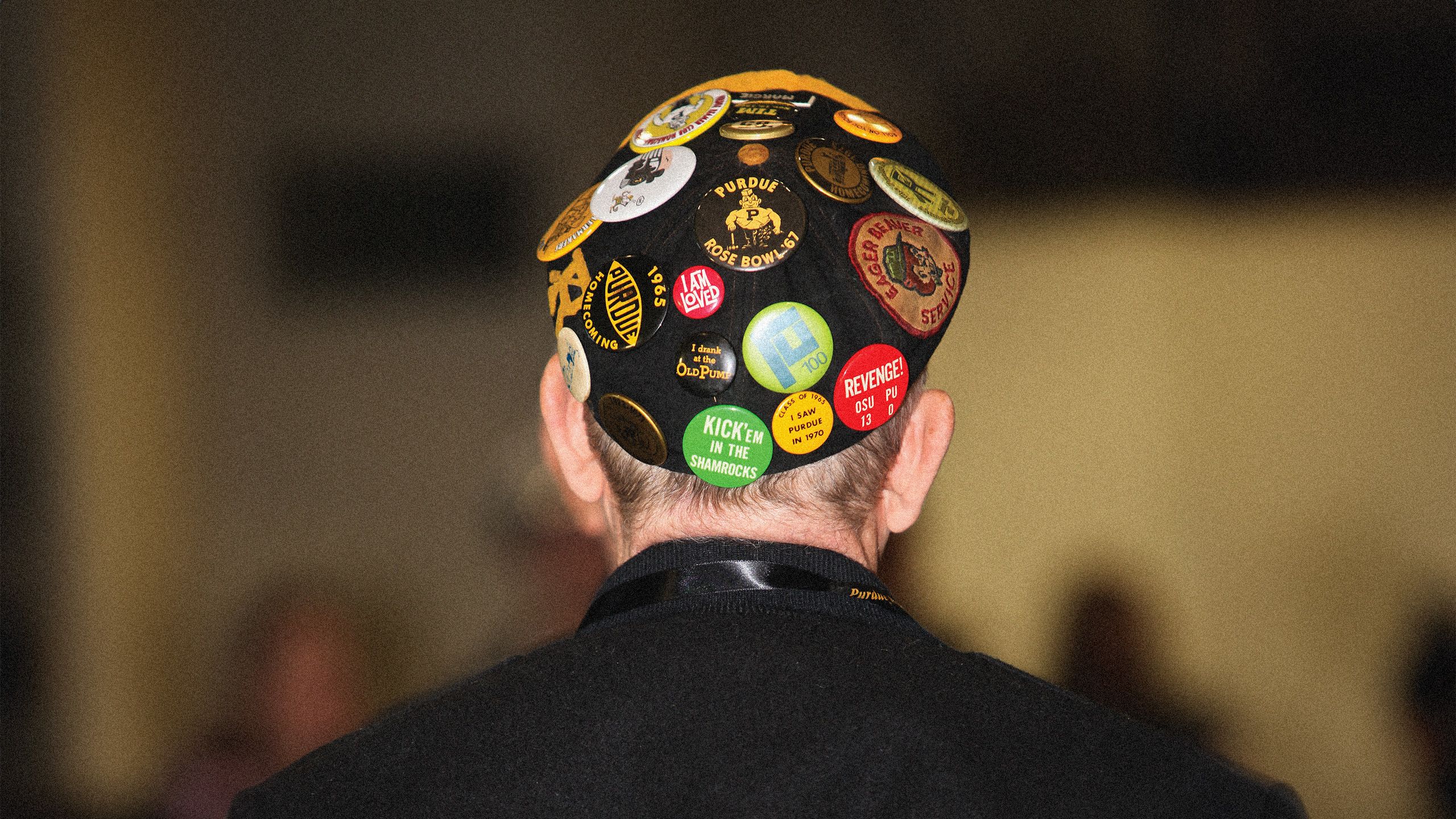
Reamer Pots // Once common among many student groups, the wearing of caps largely died out in the late 1960s. Ever fans of university history, the Reamers still wear their billed pots adorned with numerous buttons.
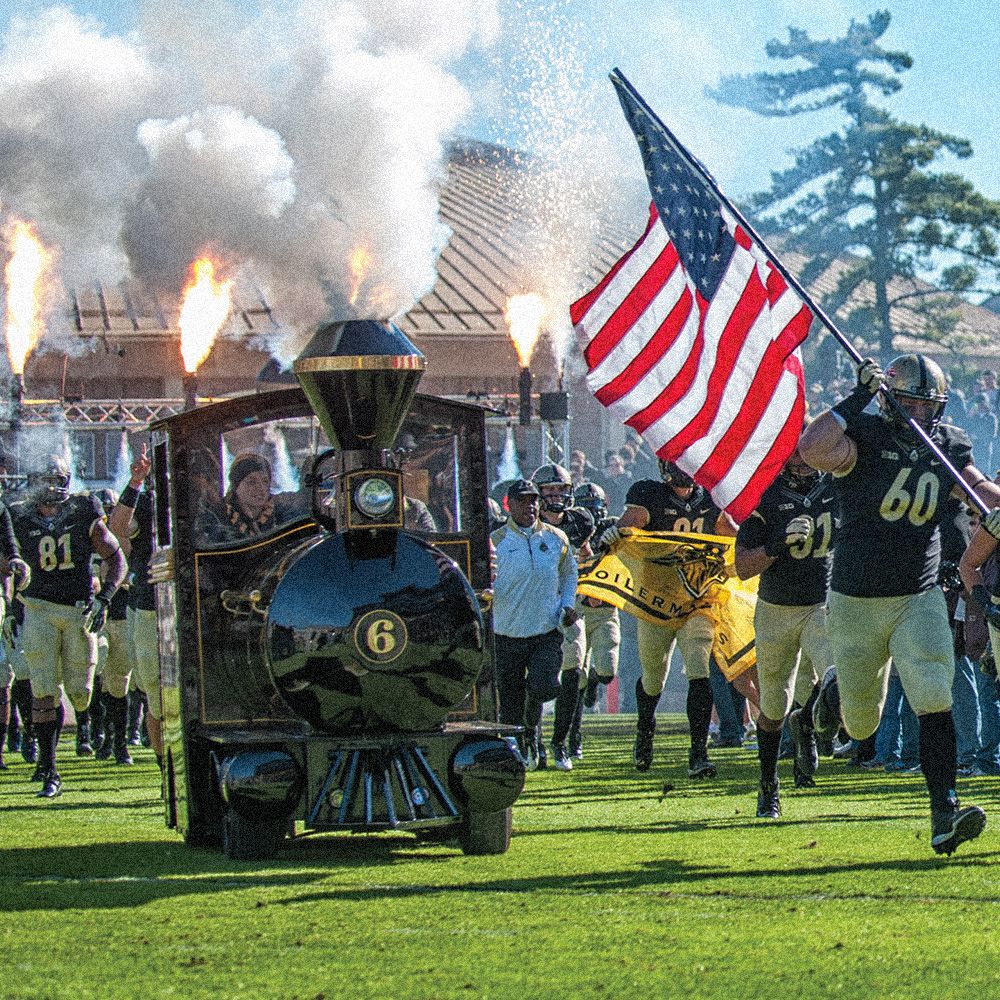
In It to Win It // On game days, the Xtra Special escorts the “All-American” Marching Band to Ross-Ade Stadium and then leads the football team onto the field to start the game. Both trains spend the game in corners of the field, blaring their horns each time Purdue scores.

Boilermaker Special VII
After logging more than 200,000 miles, Boilermaker Special V was in need of an upgrade. The current model was dedicated during halftime at a home football game on September 3, 2011, after an extensive refurbishment that included a new chassis, engine, and transmission. Two elements of VII—the bell and whistle—came from the original train.

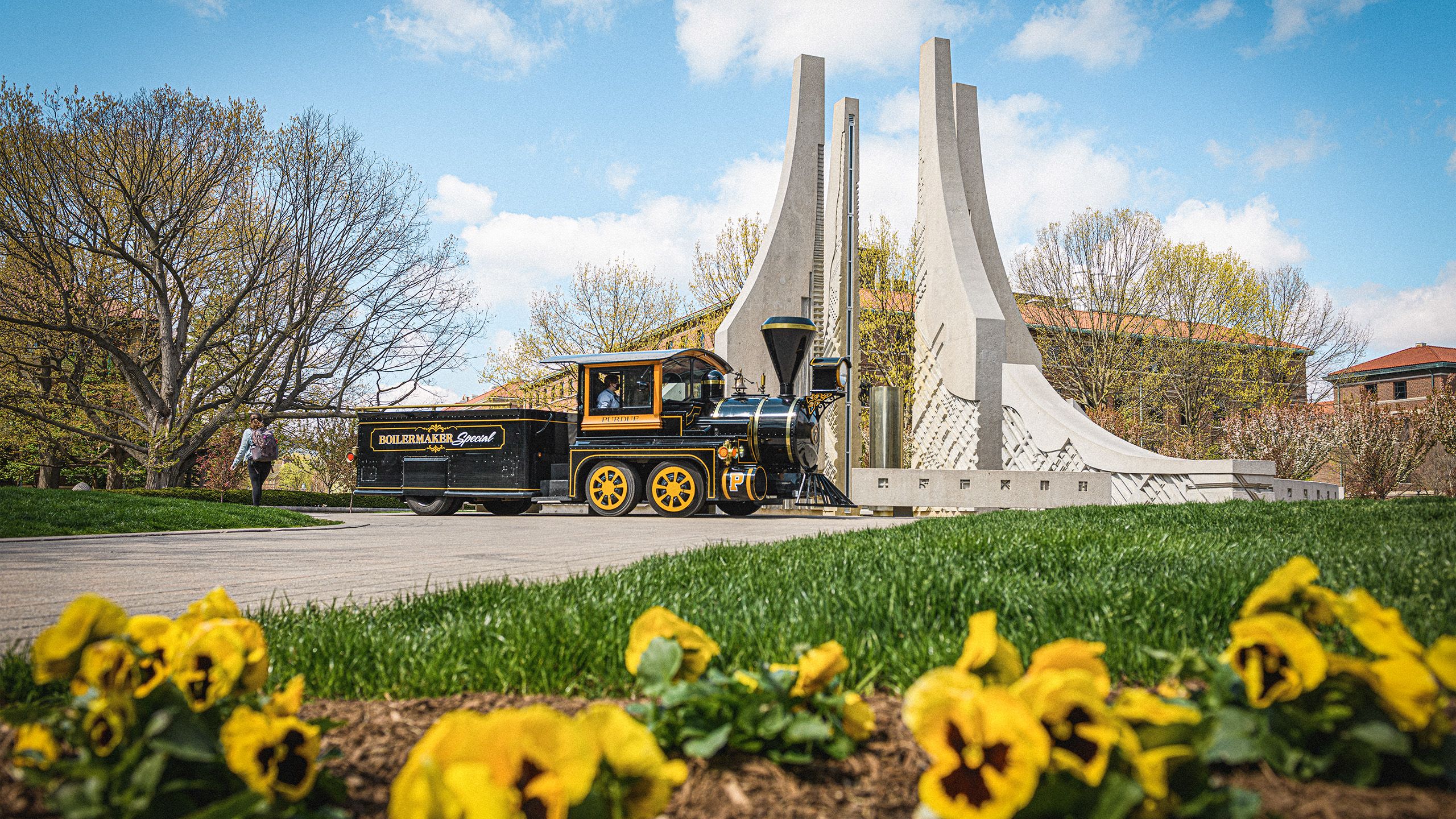
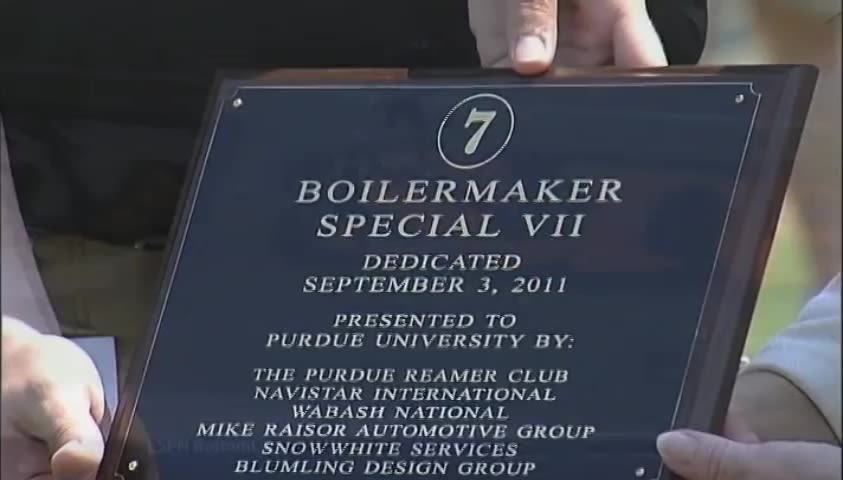
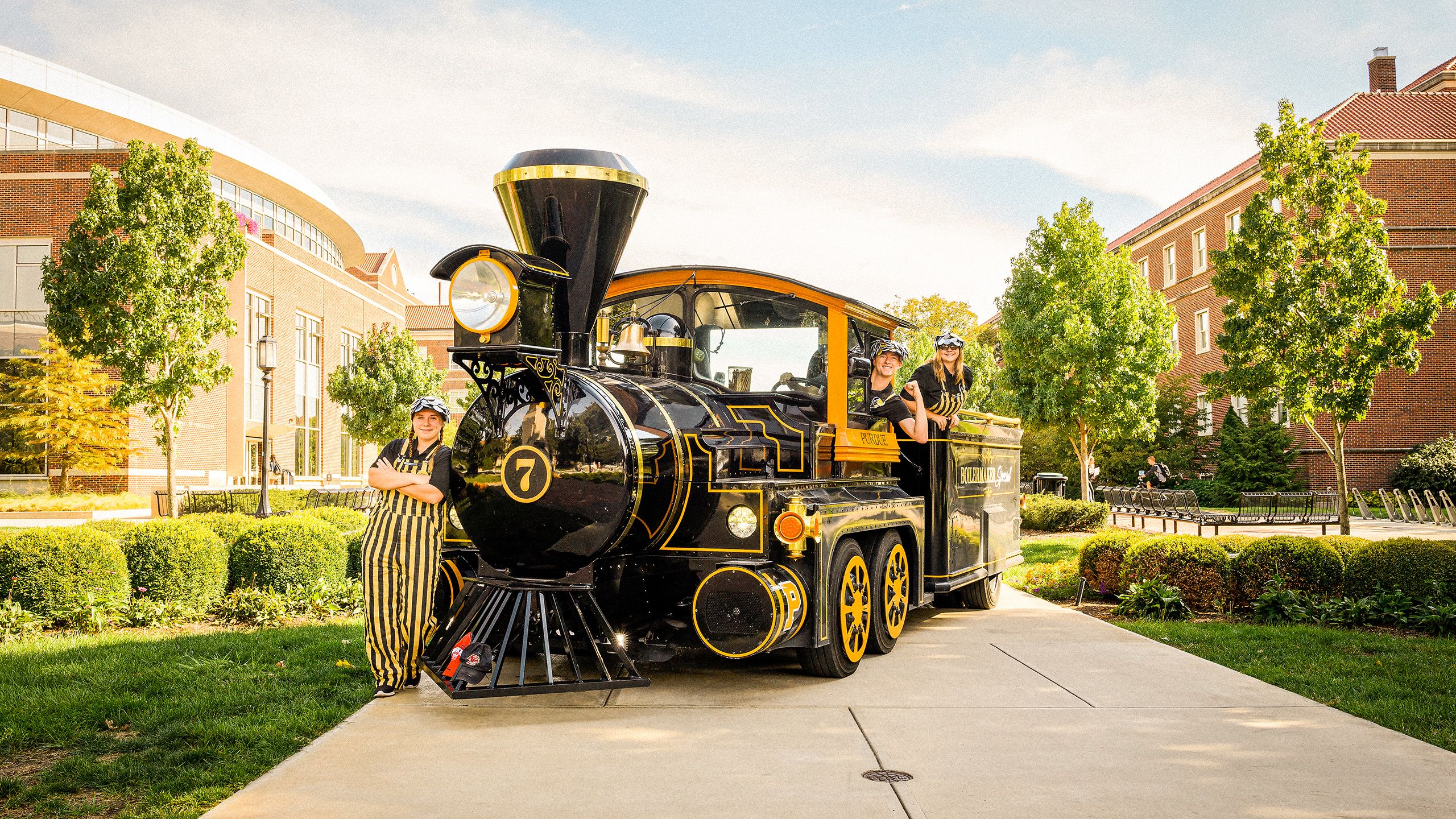
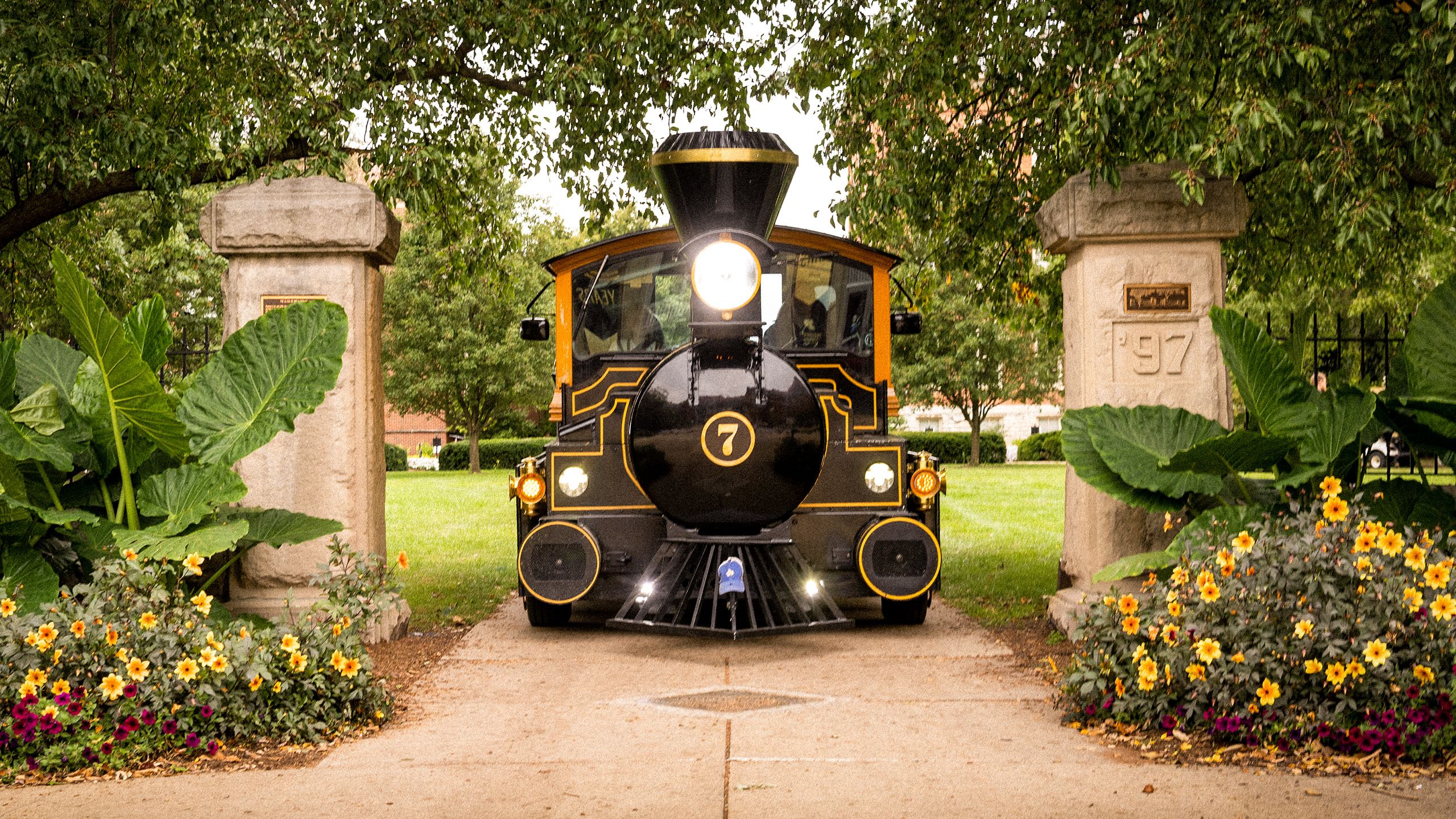

CLICK FOR SOUND
CLICK FOR SOUND


Xtra Special VIII
After a challenging build, including a last-minute discovery that the drivetrain computer had been fried, the Reamer Club launched the Xtra Special VIII during the Homecoming game on October 7, 2017. Featuring custom wheels with a Block P at the center, smoke shootouts from side pistons, a front hatch, and two freight horns, the new Xtra Special was designed for easy driving.
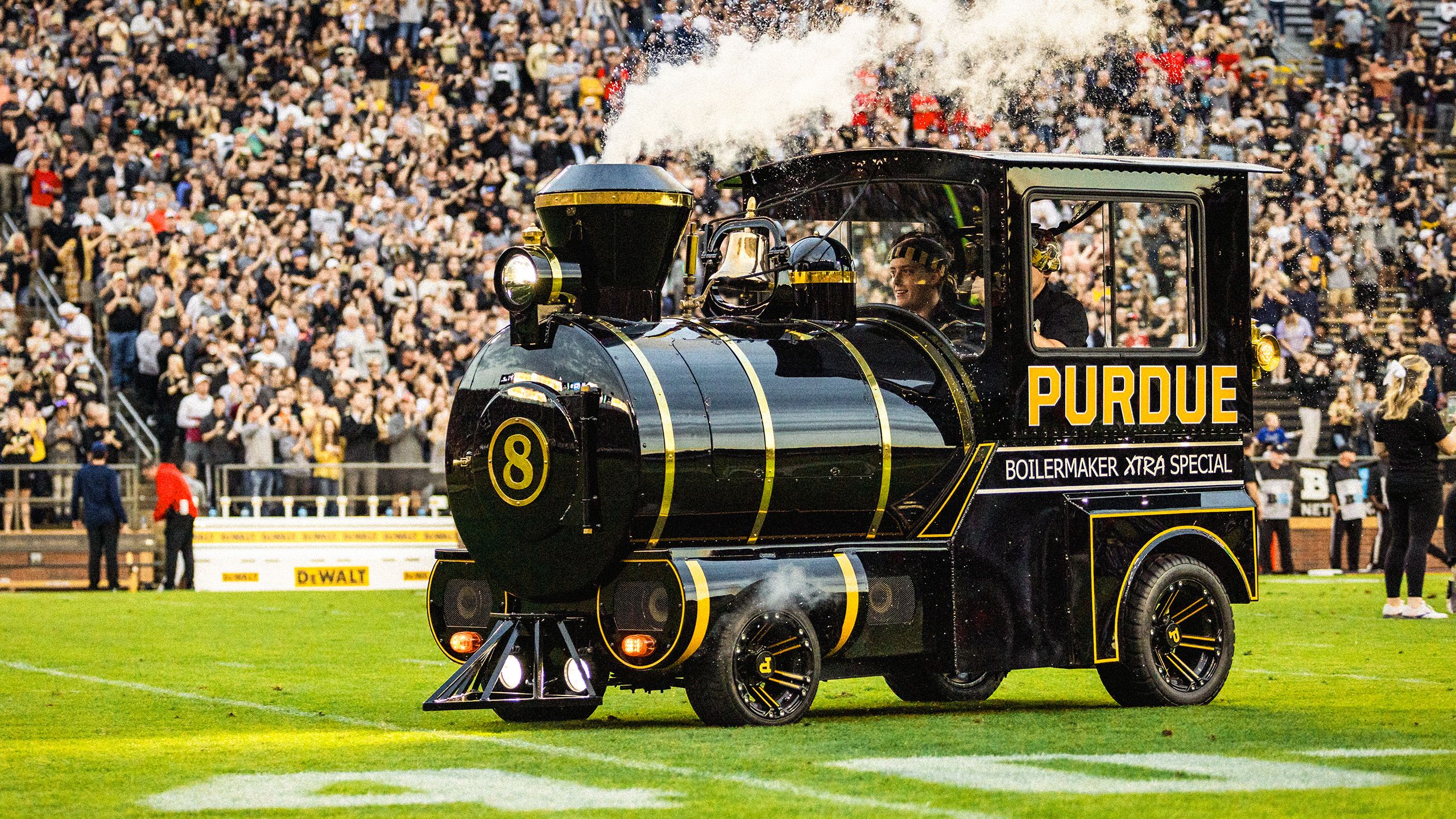
Xtra Special VIII
After a challenging build, including a last-minute discovery that the drivetrain computer had been fried, the Reamer Club launched the Xtra Special VIII during the Homecoming game on October 7, 2017. Featuring custom wheels with a Block P at the center, smoke shootouts from side pistons, a front hatch, and two freight horns, the new Xtra Special was designed for easy driving.

